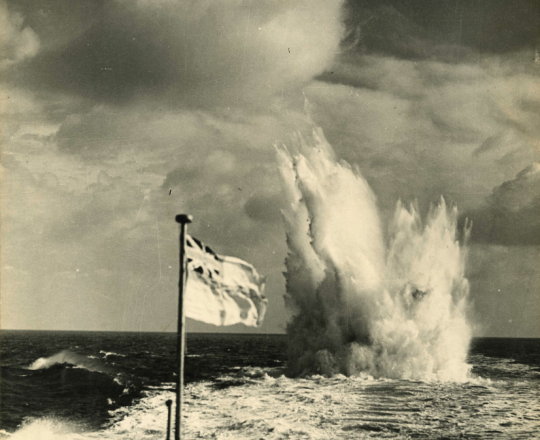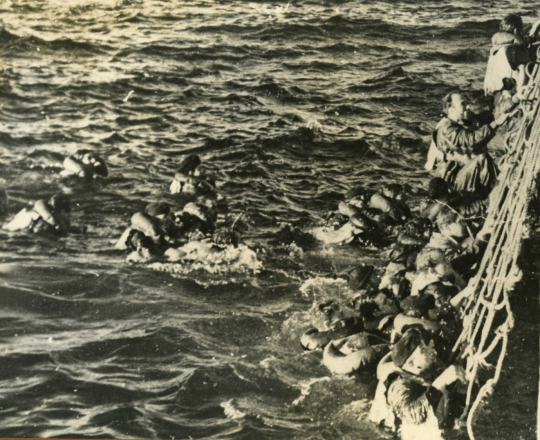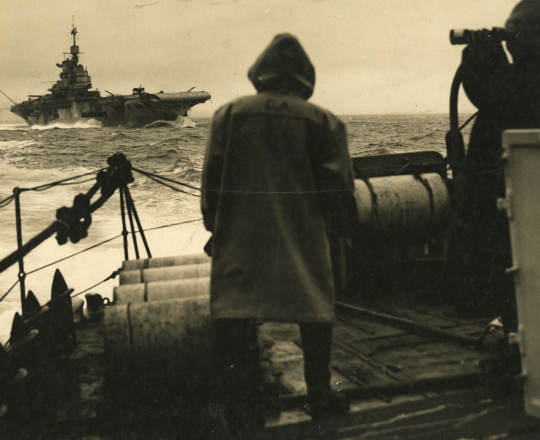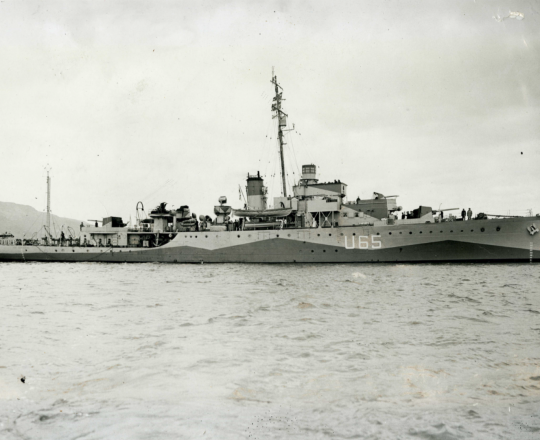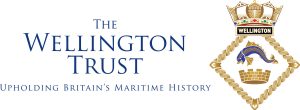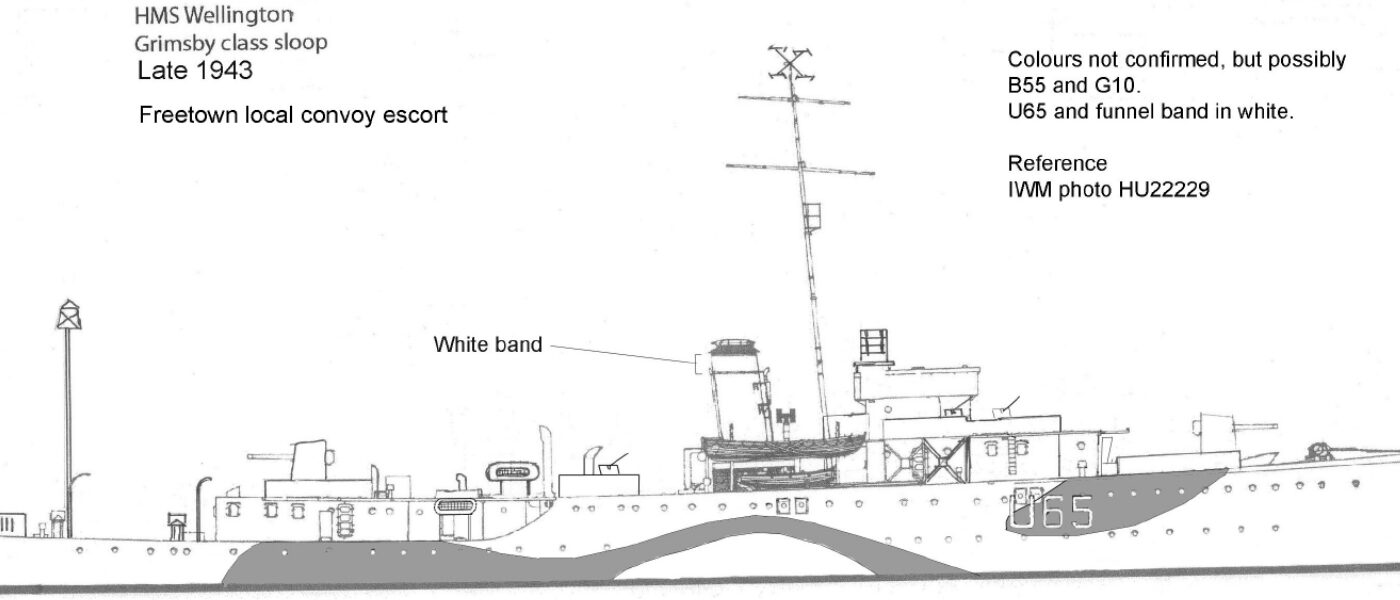
On the day that war was declared between Britain and Germany, WELLINGTON sailed from Auckland. She was ordered home via the Suez Canal, and at Aden, she was redirected to Freetown in Sierra Leone to undertake convoy duties, a role that she was to play almost uninterruptedly for the next five and a half years. Here she was ordered to escort ten merchant ships back to the UK.
On 3rd January 1940, as the convoy entered the Western Approaches to the English Channel contact was made with a submarine and the crew were piped to the first of the many wartime Action Stations that were to become such a regular feature of their lives.
The WELLINGTON was fitted with depth charge throwers for anti-submarine warfare and for the most of the next three years she was employed escorting convoys in the Western Approaches. See our re-enactment of her role as a convoy ship in the Wheelhouse of the WELLINGTON by accessing information about our onboard Immersive Interactive Experience for all the family here.
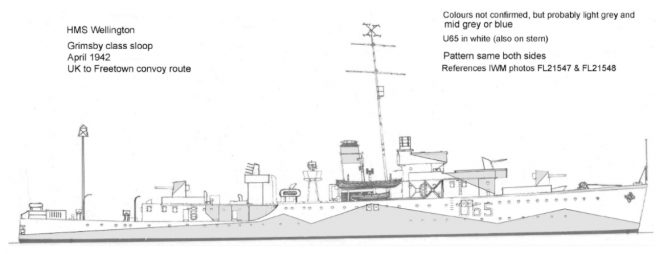
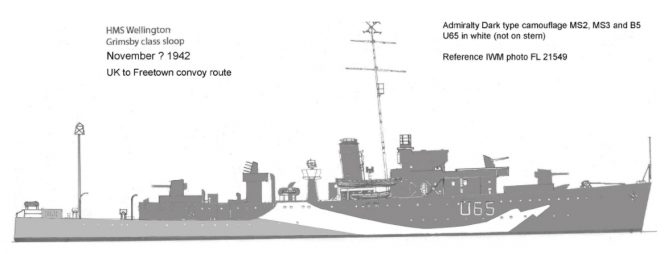
She was, on three occasions, instrumental in saving the lives of many of the passengers and crews of merchant ships that had been torpedoed by U-boats.
The major evacuation of the to British Expeditionary Force from Dunkirk involved WELLINGTON right at the end. She was called off convoy duty and ordered to St. Valery, 30 miles north-east of Le Havre, where the 51st Highlanders were virtually trapped. At St.Valery-en-Caux, Wellington used her motor boat and whalers to evacuate personnel from the beaches, which they began, but fog intervened to prevent all rescue ships reaching the coast and the 51st Highlanders were forced to surrender and became prisoners of war.
In August 1943 she was redeployed to the West Africa Command where she was employed as an escort to the convoys sailing between Freetown, Takoradi and Lagos. For the final six months of the war she was based at Gibraltar, still as a convoy escort.
During the war years she had steamed nearly a quarter of a million miles and had escorted 103 convoys. See our film “The Good Shepherd” here which brings you live experiences of a convoy ship at work during Second World War.
